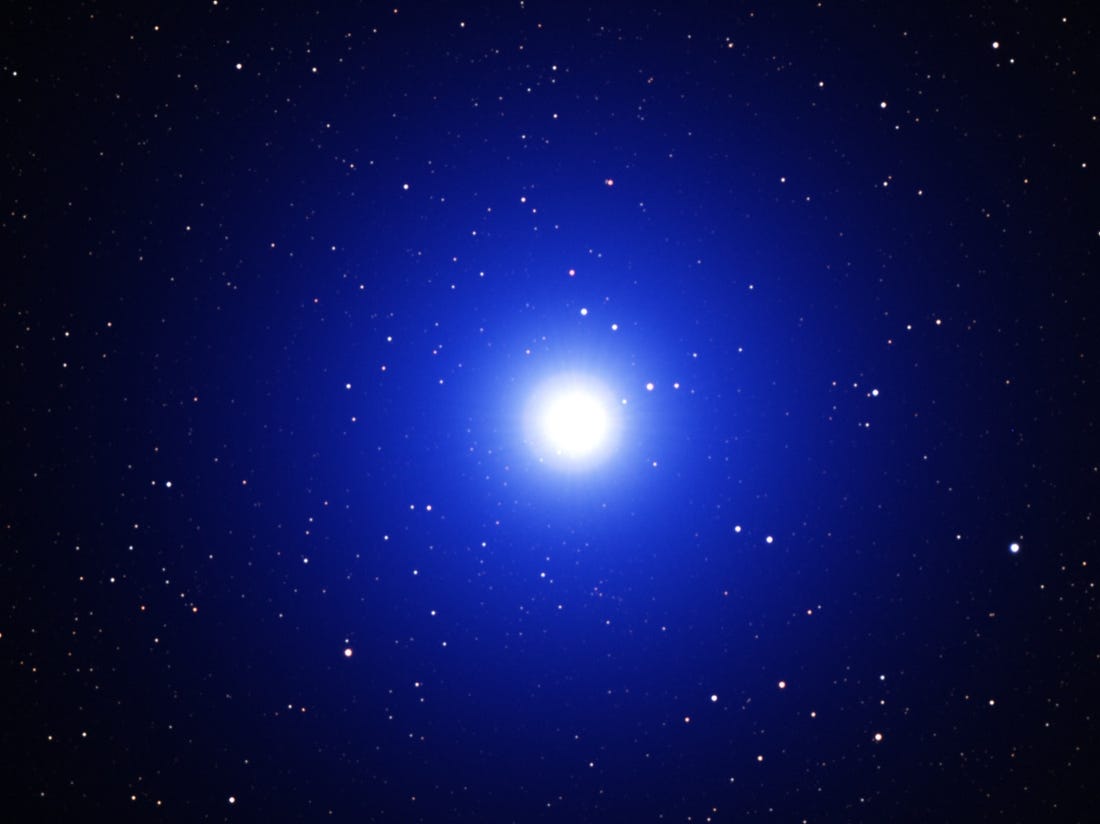When Sirius appeared on the eastern horizon in the hot Egyptian sunrises, its inhabitants rejoiced because the rising Nile would make their crops grow and their lives improve. Sirius, for them, was the best symbol of hope.
On winter nights and in most of the spring nights, the brightest star of all that we can observe in the sky appears on the southern horizon. It is the star Sirius, and it shines, with magnitude -1.5, in the constellation Canis Major.
STORY
Throughout history, the star Sirius has played an essential role in the basic knowledge of human beings. I have always thought that after Polaris, the star contributing the most to the development of the ancient inhabitants of the planet has been Sirius.
The ancient inhabitants of the Nile Valley found a relationship between the timely floods of the Nile River and the first appearance on the horizon of the star Sirius shortly before dawn (known as heliacal sunrise). In fact, in the elaboration of their calendar, the Egyptians interspersed one more month called Thoth when the star Sirius - which they called Sotis - had its heliacal rise in the twelfth month of their standard calendar. The Greeks also made use of Sirius’s observations for the elaboration of calendars, most likely, yes, inspired by those first commented observations.
Sirius was also the protagonist of the first determination of the distance of a star , although rough, but first at the end of the day. The Scottish astronomer James Gregory (1638-1675) proposed a method to compare the brightness of the Sun with that of a star using the property that the light decreased in order according to the square of the distance between them. Gregory did not use the Sun’s light, but the light of this star reflected in Saturn. It was then that the great Isaac Newton (1642-1727) used it by applying it to the star Sirius, concluding that Sirius was a million times the distance that separated the Earth and the Sun. The value is not correct (the real is almost half), but it was undoubtedly an excellent basis for checking the distances in the then-known Universe.
Method of measurement of stellar distances
But if Newton put into practice the method of measurement of stellar distances, his mentor, Edmund Halley (1656-1742), inaugurated the investigation on the proper motions of the stars. In 1718, Halley realized that the errors of observation and the precession movements were not enough to explain the significant differences that he had seen in different catalogs from that of Ptolemy to that date. He noted that there was quite a difference in Aldebaran, Arturo, and even more so in Sirius. They seemed, all, displaced towards the South. Jacques Cassini (1677-1756) did not get on particularly well with Halley as a result of an error that the latter found about the measurement of parallax, precisely, of Sirius indicated that these displacements were due to the movement itself. Of the stars themselves. Thus began the era of the precise measurement of the position of the stars to calculate their distances.
Halley’s work came from the hand of his compatriot William Huggins (1824-1910) around 1868. Huggins has been one of the pioneering astronomers in the development of spectroscopy in astronomy.
Investigating Spectrum of Sirius
For years he was investigating the spectrum of Sirius, and he used this technique to find the speed of a star for the first time utilizing this method. It concluded that the star Sirius away just over 15 kilometers per second from the Sun . It is half, but also thanks to this star, a new path was opened in the calculations of stellar speeds and required Halley’s work on the proper motion of Sirius. A movement of its own, that of this star, which had a significant impact on Astrophysics.
The following measurements of the proper motion of Sirius made it possible to detect that Sirius had an irregular motion, and Friedrich Bessel (1784-1846) proposed that it was due to the existence of another very massive body gravitationally interfering with Sirius. The object was located in 1862 by Alvan Graham Clark (1832-1897). Sirius B, verifying that it was very massive, of the order of 0.9 solar masses while Sirius A had a mass slightly more than double that of its companion. Later studies found that Sirius B had a lot of mass concentrated in a minimal volume; It was a very dense star in which a tablespoon of its material weighs 3000 kilograms; it was a star that we now know as a white dwarf.
SYRIAN OBSERVATION
As we have mentioned before, Sirius is the brightest star in the sky. Brilla magnitude -1.5, surpassed only by the magnitude of some planets, the moon, and the Sun. This is a white star 25 times more luminous than the Sun, whose surface temperature reaches 10,000 K. This is the fifth star in proximity to the Earth, is located 8.6 light-years (excluding the Sun) .
It belongs to Can mayor’s constellation that is visible on the southern horizon from mid-latitudes, reaching not too high above the horizon. Sirius is usually visible during a good part of winter and spring. The period between the end of January and the middle of March is the most prominent time interval for its observation.
Sirius is visible from almost the entire planet except from latitudes that exceed 73ºN, turning out to be a circumpolar star (always visible) for latitudes below 73ºS. Sirius serves as a reference to locate other celestial objects such as open clusters M41, M46, M47, and M50. But Sirius is not alone. The brief historical comment that we have exposed here would not be completed without treating her faithful companion, the companion of Sirius.

